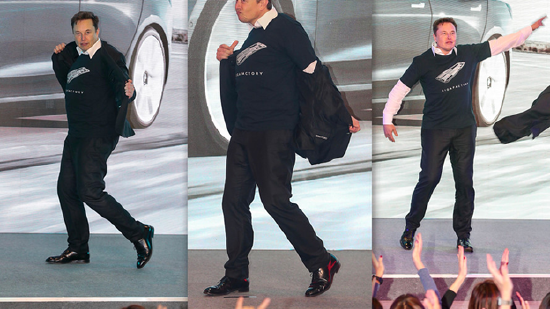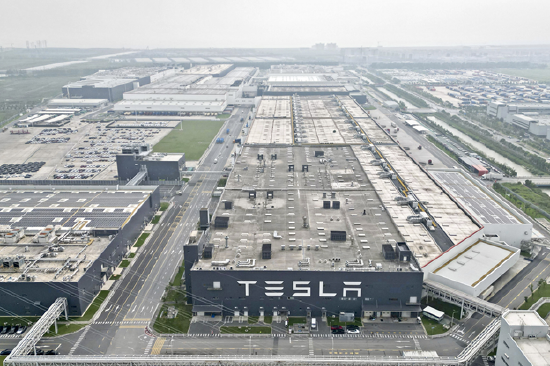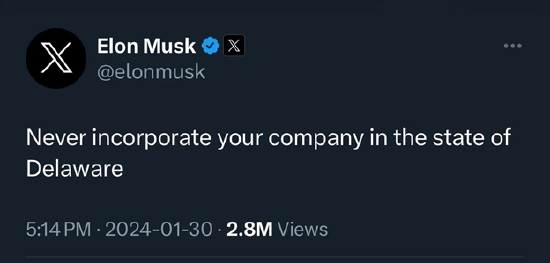Many years later, Musk may still recall that distant winter afternoon when he danced excitedly at the Shanghai factory. It was China that helped Tesla through tough times, boosted stock prices, and unlocked his wealth code. On January 7, 2020, Tesla Shanghai Gigafactory held an official delivery ceremony. Musk flew in from California on a private jet to deliver 10 domestically produced Model 3 cars to ordinary owners and officially launch the Model Y production project. At that time, Tesla’s brand positioning in China was comparable to Mercedes-Benz. Facing the fans’ cheers, Musk felt extremely relaxed, took off his jacket, and spontaneously danced on stage. Despite his stiff posture and clumsy steps, his excitement was evident. Shanghai resolved Tesla’s production capacity crisis. Shanghai was Musk’s lucky place, and the factory was Tesla’s lifesaver. For two years before the Shanghai factory started production, Musk struggled with Model 3 production capacity and almost slept at the only Fremont factory in Silicon Valley. Without increasing production capacity, delivery was impossible, and Tesla, facing a severe cash flow crisis, was in trouble. The Shanghai Gigafactory was Musk’s lifesaver. It was China’s first wholly foreign-owned car assembly plant and Tesla’s first assembly line outside the United States. Musk was amazed by China’s speed: the factory, covering 860,000 square meters, started construction in January 2019 and began production and delivery by the end of December 2019, all in just 11 months.
Shanghai’s investment policies and support have greatly benefited Tesla, helping the company overcome production challenges and expand its market share in China. The Shanghai government provided low-cost factory land and a 40 billion RMB loan to Tesla, allowing the company to establish a factory and increase production capacity. With the support from Shanghai, Tesla’s global production has increased significantly, with the Shanghai factory becoming a key player in the company’s success. Tesla’s stock value has also soared, reaching over $1 trillion by the end of 2021. It is not difficult to understand that in the following days, Musk has always had a good impression of China. In the “China threat theory” which is the politically correct American public opinion, Musk has openly admired various aspects of China against the tide many times: from new energy to the aerospace industry, from China’s business environment to the hard work of Chinese workers. He even praised China for being full of positive energy and criticized Americans for their “self-righteous” attitude. For Musk himself, the start of production at the Shanghai factory not only saved Tesla from a production capacity crisis, but also unlocked his wealth code, driving Tesla’s stock price surge and unlocking his sky-high compensation plan, making him the world’s richest man. Musk’s asset surge mainly comes from a sky-high compensation incentive agreement he signed with Tesla. In 2018, Musk reached a salary plan with the Tesla board of directors: Musk voluntarily gave up all wages and bonuses, only receiving a $1 salary. But if Musk can lead Tesla to achieve many expected goals such as performance and market value, he will receive options equivalent to 20.3 million Tesla shares in 12 installments. Of course, the Tesla board of directors set clear performance goals for this: Tesla needs to reach a minimum threshold of a $100 billion market value to make this compensation plan officially effective. After that, for every $50 billion increase in Tesla’s market value, Musk can receive options incentives of 1.69 million shares, equivalent to 1% of Tesla’s market value. And after these options are exercised, there is a five-year lock-up period. In fact, at that time, this compensation did not cause much controversy. After all, in 2018, Tesla was still in its most difficult time, facing difficulties in mass production of the Model 3, unable to deliver on schedule, rapid cash consumption, and even the risk of running out of funds. Tesla’s stock even attracted short sellers in the stock market, becoming the biggest target for short selling. Perhaps at that time, not many people would believe that Musk could actually achieve all these performance goals one by one and get all the incentive options agreed upon. But Musk really believed it. In early 2018, he publicly stated that he believed Tesla’s market value would surpass the trillion-dollar mark in the next ten years. Perhaps Musk himself did not expect that, just three and a half years later, Tesla’s market value would surpass one trillion US dollars. With the successive exercise of these incentive options, Musk’s personal assets surged from 20 billion US dollars to over 200 billion US dollars, surpassing Bezos to become the world’s new richest person. Push shareholders to approve sky-high compensation. However, after Tesla became the world’s top car company, Musk’s sky-high compensation faced uncertainty and needed to be re-voted at the shareholders’ meeting in June. Last Thursday, Tesla once again publicly urged shareholders to approve this historically largest compensation plan. Due to shareholder lawsuits, Delaware Chancery Court Judge Catherine MacKinnon ruled in February this year that the process by which Tesla’s board granted Musk a compensation agreement had serious issues, thereby rejecting this multi-billion dollar compensation and requiring Tesla’s board to reconsider granting Musk’s compensation plan. No one can deny Musk’s contribution to Tesla. He was the earliest investor, joined Tesla as chairman, then led the team as CEO, and led Tesla to continuously launch the Roadster, Model S, Model X, Model 3, Model Y, Semi truck, Cybertruck, and other models, establishing super factories in the US, China, and Europe, becoming the leader in global new energy vehicles. In terms of actual effectiveness, Musk is fully qualified to receive this sky-high compensation of up to 56 billion US dollars because the value of the options he received from Tesla is based on his achievement of many seemingly impossible performance and market value indicators. However, Judge MacKinnon’s reason for this ruling is not whether Musk’s personal contribution to Tesla deserves this compensation, but that Tesla’s board, under Musk’s leadership, did not fully fulfill its independent oversight responsibilities. Therefore, she only requested that Tesla’s board reconsider and vote on this compensation plan.
Musk furious over court ruling, threatens to move Tesla registration to Texas. Shareholders to vote on Musk’s $56 billion pay package. Tesla stock price drops over 40% this year. Third largest shareholder opposes Musk’s pay plan. Musk’s focus on other ventures criticized. Tesla faces unprecedented sales challenges. Preliminary results released this month show that Tesla’s production in the first quarter was 433,700 vehicles, but deliveries were only 386,800 vehicles, down 8.5% year-on-year and well below analysts’ initial expectations of 449,000 vehicles. This is the first delivery decline since 2020 due to the impact of the COVID-19 pandemic. Deliveries of the Model 3 and Y, the two lower-priced models, dropped by 10%, accounting for 95.6% of total deliveries. The Model S/Y and CyberTruck, high-end models combined, accounted for less than 4.5%. Earlier this year, Musk stated that Tesla’s new models would not be in mass production until late 2025 to early 2026. Sales growth may significantly slow before then, with no specific growth targets provided. Musk has completely abandoned the previously set goal of 50% annual growth, as it is simply not achievable. Analysts estimated that Tesla’s sales may only increase by 20% this year, far below the 38% growth seen last year. However, based on the first quarter’s performance, Tesla is facing challenges far beyond previous expectations. It’s not just a slowdown in growth, but a significant decline. China and the US are Tesla’s two largest markets, and while growth is slowing in the US market, Tesla is also facing intense competition in the Chinese market. A significant drop in sales means increasing inventory pressure. In the past eight quarters, Tesla’s production exceeded deliveries in seven quarters, with an excess of 46,600 vehicles in the first quarter. This indicates that Tesla is facing increasing inventory pressure. Without new models on the market, Tesla can only stimulate sales and alleviate inventory pressure by lowering prices again. The Cybertruck cannot bring the much-needed boost in sales for Tesla. Musk previously stated that the Cybertruck is unlikely to generate positive cash flow by the end of the year. The currently produced Cybertruck is only the highest-priced model, exceeding $100,000, and faces capacity issues. According to local media reports, Tesla has recently delayed the delivery date of the Cybertruck. Only able to respond with price cuts and layoffs Facing a sales crisis, Musk’s most direct response is to cut prices and lay off employees. Last Monday, Musk issued an internal memo, announcing the need to reduce costs and increase efficiency, with a global layoff of 10%, the largest since Tesla was founded. In addition to layoffs, two senior executives responsible for the battery business, including Baglino, also announced their departure. It is worth mentioning that in this global layoff by Tesla, the China business has also become a heavily affected area. According to Chinese media reports, the layoff rate in Tesla’s China region is generally around 20%, with some departments even as high as 50%. The sales department has become the main target of layoffs, with almost every store experiencing layoffs. Last Thursday, Tesla announced another global price cut, with the lowest price for the Model Y reduced to $42,900, the price of the Full Self-Driving (FSD) software reduced from $12,000 to $8,000, and the monthly subscription price reduced from $199 to $99. Tesla China, which had just raised prices, also reduced prices across the board by 14,000 yuan (1930$), with the starting prices for the Model 3 and Model Y reduced to 231,900 yuan (32010$) and 249,900 yuan (34500$), respectively. However, price cuts are a double-edged sword: not only will they lower Tesla’s profit margin, but they will also seriously damage consumers’ motivation to buy electric cars in the future. A significant reduction in the prices of new Tesla vehicles will naturally lead to a significant decrease in the residual value of used cars, as leading companies in the industry significantly reduce prices, which will also lower the overall prices of other electric vehicles. According to a survey by the American automotive industry research firm iSeeCars, the residual value of used electric vehicles aged 1-5 years in the United States has decreased by 31.8% over the past year, with an average annual value decrease of $14,400, while the value of traditional fuel vehicles has only decreased by 3.65% during the same period, and the value of used hybrid vehicles has decreased by 6.5%. iSeeCars analyst Ball believes that the decline in prices of used electric vehicles will allow more people to drive electric vehicles, but it will also discourage consumers from buying new cars. “New cars depreciate significantly, which is actually the most expensive part of buying a new car.” More and more car buyers realize that the value of electric cars will drop significantly, affecting their interest in buying new cars. The market share in China continues to decline. Although Musk denied that Tesla had abandoned the development plan for the entry-level car Model 2, he has shifted his focus to building a driverless taxi business based on Model 2, announcing the launch of the driverless taxi business on August 8th. However, the concept of driverless cars has not effectively boosted Tesla’s sluggish stock price. While Tesla’s products are in short supply and busy increasing production capacity, Musk once proudly announced that Tesla did not need advertising or endorsements. He even disbanded Tesla’s public relations department in the United States, believing that they did not need to spend energy dealing with the media, as good products would attract media coverage on their own. But now, with Tesla facing oversupply and worrying about sales volume, Musk has had to abandon his previous stance. Tesla has already spent $200,000 on social media advertising on his own X platform, returned to the Facebook platform he once despised, and even started covering travel expenses for media events. It turns out that when it comes to sales worries, Tesla is no different from other car companies. The United States and China are Tesla’s two largest markets, but Tesla faces different challenges in these two markets: the electric vehicle market in the United States has cooled significantly, with hybrid cars being consumers’ favorites. In China, the world’s largest new energy vehicle market, Tesla’s product competitiveness and brand influence have clearly declined in the face of rising Chinese car companies. Unlike four years ago when Tesla was leading the way just after localization, the competition in China’s new energy vehicle market is now fierce: not only are there many new energy giants like BYD and Geely, but also new forces like NIO and Xpeng, as well as tech giants like Huawei and Xiaomi have entered the market one after another. As domestic car companies continue to release new cars and market competition intensifies, Tesla, which has been slow to release new models, has lost much of its product competitiveness. Over the past few years, Tesla’s market share in China has been declining. By the end of last year, Tesla’s market share in China had dropped from 16% in 2021 to 6.7%. Tesla’s last capacity crisis was saved by the efficient operation of its Shanghai factory, but this time Tesla is facing a sales crisis, and China may not be able to help him.


